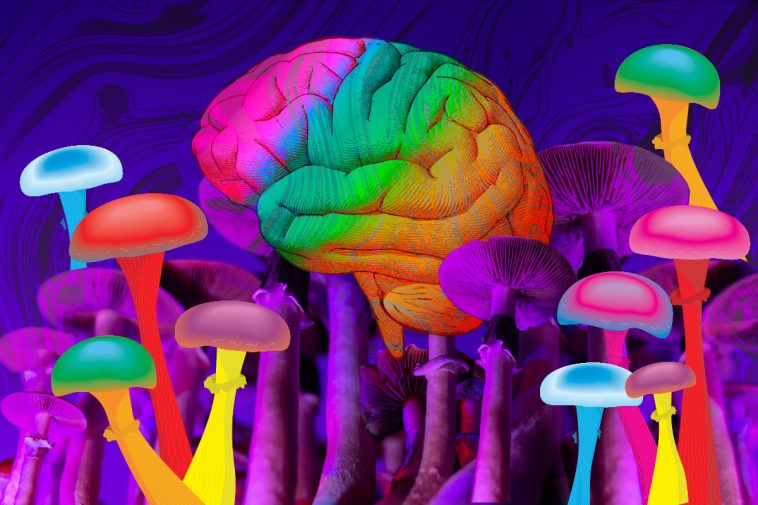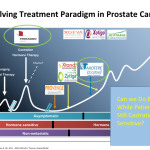
Introduction: Addressing the Opioid Crisis in Modern Medicine
The opioid epidemic has fundamentally reshaped our understanding of substance use disorders and the healthcare system’s role in mitigating their effects. With economic costs estimated to have soared to nearly $1.5 trillion in 2020 alone, society is forced to confront not only the tragic toll in human lives but also the overwhelming financial burden burdening our communities and healthcare systems. As we face these numbers, it becomes clear that traditional treatment models, which often come with high relapse rates and a range of challenging issues, require fresh, innovative approaches. One such emerging option is psilocybin-assisted therapy, a treatment modality once relegated to the fringes of scientific inquiry and now gaining credible consideration as a potential boon for patients suffering from opioid use disorder (OUD).
In this opinion editorial, we’ll take a closer look at the promise of psilocybin-assisted therapy, compare it against conventional treatment methods, and discuss both the clear opportunities and the tricky parts that come with integrating it into our current treatment frameworks. By steadily examining the costs, benefits, and potential roadblocks, we can figure a path through this evolving landscape, ensuring that our strategies are as effective as they are innovative.
Understanding Traditional Treatments and Their Limitations
For decades, the frontline pharmacological strategies for opioid dependence have focused on agents such as methadone, buprenorphine, and naltrexone. These medications work their magic by interacting with the μ-opioid receptors in the brain. They support patients by controlling withdrawal symptoms and reducing cravings without producing the euphoric effects of opioids. However, even with careful dosing and counseling, these traditional therapies face significant limitations:
- High relapse rates ranging between 40% and 60%
- Substantial annual treatment costs—ranging from approximately $6,000 for methadone and buprenorphine to over $14,000 for naltrexone
- The need for integrated care modalities to address underlying psychological factors such as trauma or co-occurring mental health disorders
Below is a quick table summarizing the average yearly costs associated with these traditional therapies:
| Treatment Method | Average Annual Cost (USD) |
|---|---|
| Methadone | $6,552 |
| Buprenorphine | $5,980 |
| Naltrexone | $14,112 |
While these treatments have provided relief to many, the tangled issues surrounding medication adherence and recurring relapse highlight the need for alternative therapies that might offer more durable change. Current treatment pathways are loaded with issues—ranging from the complexities of daily dosing to side effects that dissuade long-term use. These challenges set the stage for exploring new modalities such as psilocybin-assisted therapy.
Psilocybin-Assisted Therapy: A New Hope for Those with OUD
Psilocybin, a psychedelic compound naturally found in Psilocybe mushrooms, has recently reemerged from the shadows of controversy. Initially classified as a Schedule I substance because of its recreational reputation, psilocybin is now being viewed through a different lens by researchers and clinicians alike. Although its applications have largely been confined to experimental studies in the past, early breakthroughs show that psilocybin may play a role in reducing opioid cravings and promoting neuroplasticity—a process in which the brain adapts and forms new connections.
How Psilocybin Works in Treating OUD
Psilocybin’s potential in mitigating opioid use disorder lies in its unique interaction with the brain’s serotonergic system. Unlike traditional opioid treatments that hone in on μ-opioid receptors to mask withdrawal symptoms and blunt craving impulses, psilocybin activates specific receptors such as 5-HT2A and, to a lesser degree, 5-HT1A. This receptor activity is believed to reset certain brain circuits:
- The activation of serotonergic receptors appears to modulate emotional and reward-related pathways
- Patients may experience an enhanced capacity for introspection and emotional processing during guided therapy sessions
- This process can unearth and address underlying psychological issues—often the hidden complexities contributing to addictive behavior
The treatment model for psilocybin typically involves assisted therapy, where a licensed professional works with the patient in a controlled environment to help them process their experience. This structured setup is seen as a key element in helping patients make sense of the emotional journey sparked by the drug, ultimately paving the way for long-lasting behavioral changes. Indeed, when patients acknowledge and work through their past traumas and co-occurring mental health issues, they stand a better chance of moving into a healthier phase of recovery.
Economic Implications: The Financial Argument for Alternative Therapies
Looking beyond the clinical outcomes, the economic impact of the opioid crisis is a compelling motivational force behind the push for innovative treatments such as psilocybin-assisted therapy. The US Joint Economic Committee has noted that the financial toll from opioid-related issues has surged by nearly 37% in a span of three years. When adjusting for the ripple effects of reduced productivity or premature mortality, the numbers might even be more intimidating.
A quick comparison highlights the staggering costs associated with traditional opioid treatments and the broader economic burden on society:
- Traditional OUD treatments have high annual costs per patient, which, when multiplied across populations, contribute significantly to healthcare spending.
- The indirect costs—including lost productivity and the economic impact of overdose deaths—further complicate the financial picture.
- Introducing more cost-effective and durable alternatives such as psilocybin-assisted therapy might offer long-term savings and reduce the overall fiscal strain on both public and private sectors.
Although the price tag for emerging treatments might seem high initially due to the specialized care and controlled settings required, the potential for reducing relapse rates and improving overall patient outcomes represents a promising investment for the future. When viewed through the lens of long-term cost savings—as well as the immeasurable benefit of a returned quality of life—the case for psilocybin-assisted therapy becomes all the more compelling.
Research and Regulatory Gaps: The Confusing Bits Surrounding Psilocybin
Despite the promising early findings, several confusing bits remain before psilocybin can be broadly implemented as a treatment option for opioid use disorder. Researchers face a number of tangled issues, particularly around optimal dosing regimens and the integration of psilocybin into existing psychosocial support frameworks.
Identifying and Addressing Research Gaps
Here are some of the key research areas that demand further exploration:
- Blinding in Clinical Trials: One of the tricky parts in psychedelic research is achieving effective blinding. Patients and researchers alike often become aware of treatment conditions due to the pronounced psychological effects of psilocybin.
- Long-term Efficacy: Most studies to date have been short-term. Long-term studies are needed to assess whether psilocybin-assisted therapy can maintain its benefits over a period of months or years, and importantly, whether it effectively curbs relapse rates.
- Optimal Integration: How best can psilocybin be combined with existing pharmacological and psychosocial interventions? Ongoing trials are necessary to figure a path through these challenges and determine the most effective treatment protocols.
- Safety Profile: While initial studies suggest a favorable safety record for psilocybin when used responsibly within therapeutic settings, more high-quality randomized controlled trials are needed. This is imperative to ensure that patients do not face unintended side effects or complications during their recovery journey.
In response to these challenges, the U.S. Food and Drug Administration (FDA) has published guidance aimed at refining clinical trial protocols involving psychedelic substances. This move is designed to help researchers navigate the nerve-racking regulatory environment and ensure that ethical frameworks remain robust. Without such guidelines, the potential for investigator misconduct or unforeseen risks could derail the careful integration of psilocybin into mainstream treatment.
As the landscape continues to evolve, it is essential for the research community to steer through these twists and turns with rigor and transparency. Only through sustained, multidisciplinary research can psilocybin’s true potential as a treatment modality be established and scaled effectively.
Pharmacists: Key Players in the New Treatment Paradigm
The evolving field of psilocybin-assisted therapy is not solely the domain of psychiatrists and researchers. Pharmacists, as medication experts with nuanced insights into drug interactions, patient adherence, and medication management, are emerging as essential collaborators in this new treatment paradigm.
Pharmacists’ Role in Comprehensive Treatment Models
There are several ways in which pharmacists can contribute to the safe and effective use of psilocybin in treating opioid use disorder:
- Medication Management: Pharmacists can help design and oversee psilocybin treatment protocols, ensuring that dosing regimens are safe and effective while monitoring for potential interactions with other medications.
- Patient Counseling and Support: With their expertise, pharmacists can offer critical guidance to patients transitioning from traditional opioid treatments to psilocybin-assisted therapy. These interactions can help address any underlying concerns and foster medication adherence.
- Collaborative Care: By partnering with mental health professionals and addiction specialists, pharmacists can help build a holistic care framework. Such collaboration ensures that patients receive optimal support on multiple fronts—from managing the medical aspects of their treatment to addressing the emotional and psychological components of recovery.
- Educational Outreach: Pharmacists are in a unique position to inform patients and their families about evolving treatment options. Educational initiatives led by pharmacists can help demystify the use of psychedelics, fostering informed discussions about benefits, risks, and realistic expectations.
Organizations such as the Psychedelic Pharmacists Association are already championing the inclusion of pharmacists in discussions about guideline recommendations and policy formation at both state and federal levels. This involvement is super important, as it will help shape the safe adoption of psilocybin-assisted therapy, directly benefiting the broader community of patients struggling with OUD.
Regulatory Hurdles and Collaborative Opportunities
While states like Oregon, Colorado, and New Mexico lead the way in implementing psilocybin-assisted programs, regulatory challenges remain on the federal level. The current scheduling of psilocybin as a Schedule I substance complicates efforts to conduct large-scale clinical trials and limits patient access to this promising treatment option.
Current Legal and Policy Landscape
The legal status of psilocybin varies widely across different regions:
- Some states have embraced psilocybin-assisted therapy through ballot measures or legislative actions, expanding experimental programs and establishing controlled access models.
- Other localities, including several cities in California, Michigan, Massachusetts, and even Washington, D.C., have moved to decriminalize psilocybin. While decriminalization does not equate to fully legal medical access, it minimizes criminal liability and opens the door for broader public discourse about its therapeutic benefits.
This patchwork of policies can seem nerve-racking at times. Yet, it also reveals a broader trend toward rethinking our approach to mental health and substance abuse treatment. As policy makers and healthcare providers grapple with this issue, multidisciplinary collaboration is emerging as the most effective strategy. By including voices from all corners of the healthcare community—especially pharmacists, clinicians, and researchers—we can work through the fine points involved in responsibly integrating psilocybin-assisted therapy into existing systems.
Overcoming Implementation Challenges and Ensuring Patient Safety
Every major treatment innovation faces its share of implementation challenges. With psilocybin-assisted therapy, the issues to address are both practical and ethical. Here are some of the key challenges and strategies to meet them:
- Integration with Traditional Therapies: It is essential to develop protocols that effectively align psilocybin with established pharmacological and psychosocial treatments. A combined approach will help patients achieve more comprehensive recovery by addressing not only their physical dependency but also the emotional scars that contribute to relapse.
- Guided Therapy Sessions: The psilocybin treatment model relies on having a trained professional present to help patients process challenging emotions that surface during the experience. Ensuring that these professionals are well-versed in both the medication’s effects and psychological support strategies is a key factor for success.
- Robust Ethical Oversight: Recent setbacks in other areas of psychedelic research have underscored the need for stringent ethical safeguards. High-quality trials with rigorous oversight and transparent reporting will be critical in building trust with both the medical community and the public.
- Patient Monitoring and Follow-up Care: Long-term safety and efficacy data remain scarce. It is essential to design follow-up protocols that monitor patient outcomes over extended periods, helping to identify any delayed side effects or risk factors.
When these practical strategies are combined with a collaborative, multidisciplinary approach, psilocybin may not only prove to be an effective treatment for opioid use disorder but also a transformative tool capable of alleviating some of the long-term social and economic burdens of the crisis.
The Road Ahead: Challenges, Opportunities, and Future Directions
Looking into the future, psilocybin-assisted therapy presents a mix of promising opportunities and significant challenges. Its potential to reduce opioid cravings and improve mental health outcomes is encouraging; however, bridging the gap between experimental treatment and mainstream adoption is loaded with twists and turns that we must carefully manage.
Guiding Principles for Future Research
To build a solid foundation for psilocybin-assisted treatment for OUD, researchers and clinicians should focus on the following key aspects:
- Long-Term Studies: Comprehensive research that evaluates both short-term benefits and long-term outcomes is must-have. These studies will provide essential data on relapse prevention, overall well-being, and the sustainability of therapeutic benefits.
- Standardization of Treatment Protocols: Developing uniform guidelines will help minimize the confusing bits associated with dosing, session structure, and therapeutic integration. This standardization is key to ensuring that patients across different settings receive comparable care.
- Integrated Healthcare Models: Future treatment frameworks should combine psilocybin with supportive care from mental health professionals, addiction specialists, and pharmacists. Together, these initiatives can form a robust system that addresses multiple aspects of patient recovery.
- Expanded Access and Education: As legal barriers continue to shift, it is crucial to educate healthcare providers and the public about the risks and benefits of psilocybin-assisted therapy. Increased awareness can pave the way for its integration into established treatment regimens.
These guiding principles will help ensure that psilocybin-assisted therapy is implemented safely, ethically, and effectively, maximizing its therapeutic benefits for individuals grappling with opioid use disorder.
Conclusion: Charting a New Course for OUD Treatment
In conclusion, the exploration of psilocybin-assisted therapy as a treatment for opioid use disorder represents both a breakthrough and a significant challenge. On one hand, the potential to reduce opioid cravings, stimulate brain reorganization, and ultimately lower the staggering economic and human costs of addiction is highly encouraging. On the other hand, substantial research gaps, regulatory hurdles, and practical implementation challenges remain.
By carefully addressing the subtle details of treatment integration, ensuring patient safety via rigorous ethical oversight, and leveraging the expertise of pharmacists and other healthcare professionals, we can begin to sort out the tangled issues associated with traditional therapies and pave the way for newer, more durable solutions. As more states embrace controlled access models and as federal policies gradually shift, psilocybin-assisted therapy could emerge as a cornerstone of addiction treatment protocols.
Ultimately, the journey ahead is both exciting and nerve-racking. It requires persistence, careful study, and most importantly, a collaborative effort across multiple domains of healthcare. As we continue to figure a path through the confusing bits of research and regulatory challenges, it is crucial to remain open to innovative treatments that bring us one step closer to alleviating the impacts of the opioid crisis. There is much left to learn, but the potential benefits of psilocybin-assisted therapy for patients with OUD offer hope for a future in which recovery is not only possible but sustainable—thereby reducing both the personal and economic toll of this widespread epidemic.
In the end, embracing psilocybin-assisted therapy may force us to rethink conventional treatment models and to venture into a new era of personalized, integrated care that addresses the full, nuanced tapestry of addiction. By doing so, we not only honor the significant strides made in modern medicine but also set the stage for more resilient and compassionate healthcare systems capable of meeting the challenges of the opioid crisis head-on.
As opinions and research continue to evolve in this arena, the medical community must remain flexible, informed, and collaborative. The dialogue is just beginning, and with every carefully conducted study, the promise of psilocybin as a transformative therapy for opioid use disorder inches closer to reality. Whether it will emerge as a mainstream treatment option depends not only on scientific validation but also on the willingness of all stakeholders—from pharmacologists to policy makers—to work together in overcoming the intimidating obstacles that lie ahead.
It is through open, multidisciplinary collaboration and a commitment to evidence-based practices that we can hope to make meaningful progress in the fight against the opioid epidemic. Psilocybin-assisted therapy, if proven safe and effective over the long haul, has the potential to transform lives and to ease the burdens that have long plagued our healthcare system. The journey may be filled with complicated pieces and nerve-racking challenges, but the reward—a healthier, more resilient society—is well worth the effort.
Originally Post From https://www.pharmacytimes.com/view/the-promise-of-psilocybin-assisted-therapy-for-opioid-use-disorder
Read more about this topic at
The Promise and Future of Psychedelics Research
Psychedelic Therapy: Transforming Mental Health Care


